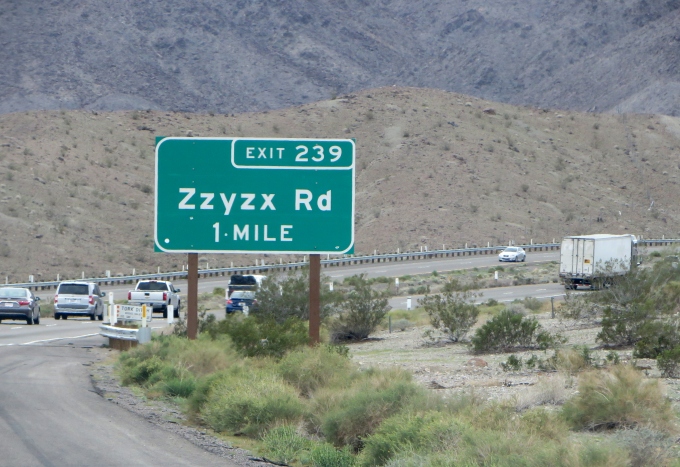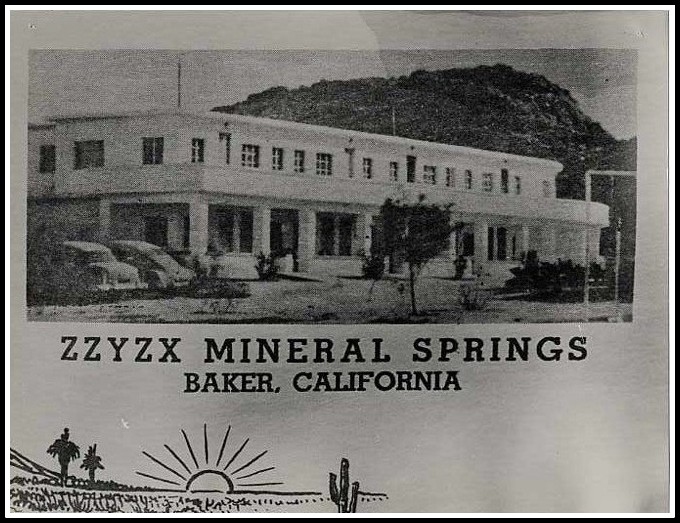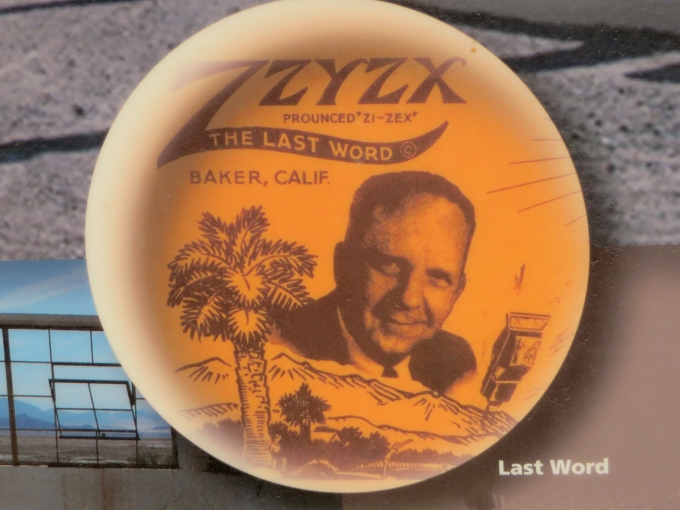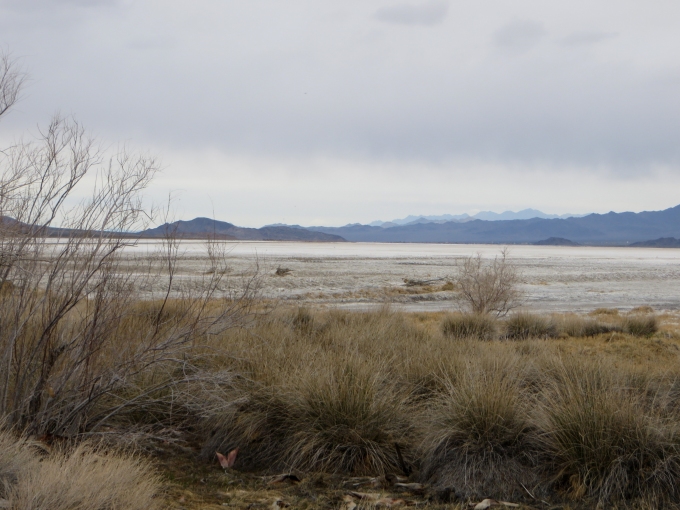A Trip to Zzyzx - The Last Place on Earth
/Every time we travel from Las Vegas to Los Angeles, we pass by the Zzyzx Road sign. We always comment about it … it's a landmark along the route … but we've never taken the time to figure out what's out there on Zzyzx Road. So we took Exit 239 off I-15 and followed the 4.5 mile part-paved, part-gravel road to the former location of the Zzyzx Mineral Springs and Health Spa. This time, we wanted to take a few extra minutes to explore.

I googled “zzyzx” (ZYE-zix) to give us an idea of what to expect. The Urban Dictionary defines it as “The last place on Earth. It was originally founded by a crazy old man who named it ZZYZX since it would be the last word in the dictionary, and hence 'the last place on Earth'. Currently it's an abandoned town somewhere between Las Vegas and LA.” That's not entirely correct, but pretty close.
In the high Mojave Desert, Soda Dry Lake was a pre-historic quarry site (and probably not dry then). It was used as a small army outpost in the mid-1800s providing refuge and water along the Mojave Road for wagon trains, then subsequently abandoned. In 1944, Curtis Howe Springer, a master of quackery and deceit, as well as a popular, syndicated radio evangelist, submitted a federal mining claim for 12,000 acres of land and proceeded to develop it into the Zzyzx Mineral Springs and Health Spa.
The area was originally named Camp Soda and Soda Springs, but Springer cleverly renamed it “Zzyzx, the last word in health”. He was debunked by the AMA in 1969 for claiming to be a physician and osteopath and the Feds finally caught up with him in the early 1970s and evicted him from the land. He served a short jail sentence and spent the rest of his life in Las Vegas, doing who-knows-what. There's even a YouTube video on Springer's “last word”.
The old resort was converted into the Desert Studies Center in 1976 within the boundaries of the Mojave National Preserve. The little spring-fed, artificial Lake Tuendae, originally part of the spa, is now a refuge habitat for the endangered Mohave tui chub (a small fish), the Pacific tree frog and migratory waterfowl.
We headed south towards the old resort and were taken by the beauty of this desolate area. It was overcast, grey and cool, yet as we followed the serpentine road, hugging the shoreline of this ancient dry lake, it wasn't hard to imagine the wooly mammoths and saber-toothed cats roaming around. The land around the dry lake is said to resemble the savannahs of modern day Africa. The lake itself, white with alkaline deposits, looked snow-covered.
A gate across the road announced our arrival at Zzyzx aka the Desert Studies Center. We parked the car in a large gravel lot. There was no one else around; no other cars were parked in the lot. There were picnic tables, restrooms and an informational kiosk with weather-beaten signs. We got out, stretched and decided to explore the facilities a bit. We could see remnants of the old spa, decrepit foundations and concrete buildings in the near distance.
The area around tiny Lake Tuendae was actually quite beautiful. There was a self-guided path around the lake with more weatherworn, but still readable, signs. The trail was short, but tranquil and beautiful. Coots swam leisurely in the mirror-calm water and chattered amongst themselves. Jays eyed us curiously from overgrown palm trees.
There was an old abandoned life boat lying on its side under the palm trees. It was totally out of place next to the dry lake and the tiny, shallow Lake Tuendae which could not have accommodated it. We had to wonder about its placement there and its history, but we could find no information. It remains a mystery.
An hour or so later, we retraced our route and continued on Interstate 15 to Los Angeles. That's not the end of our exploring I-15 … not by a long shot ...there's more excitement to be had. So hold on to your boots and join us in another day or two for more exciting stops along the highway.
An additional bit of trivia about Zzyzx? The 2006 thriller movie, Zyzzyx Road, is the lowest grossing movie in American history. It only ever played in one theater in Dallas and grossed a total of $30.








